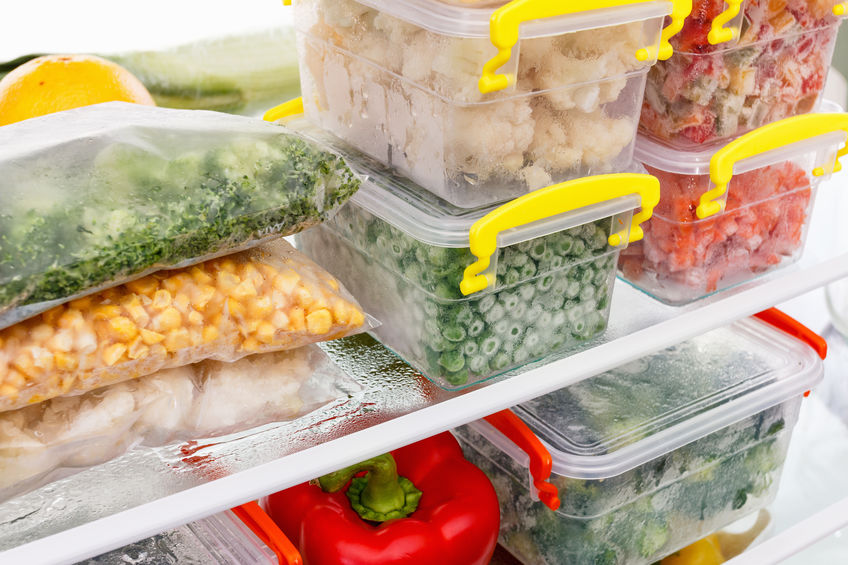- Clean Home
- Kitchen Cleaning & Organizing
- Frozen Food Storage Tips
Frozen Food Storage Tips
What's Safe, What's Not
Frozen food storage tips: what's safe and what's not.
Freezing food will keep it from spoiling, but the quality will still deteriorate.
When preparing to marinate and freeze steak, fish, burgers, or chicken, the key to maintaining their quality and safety lies in the proper packaging. This step is not to be overlooked.
Always remember to use frozen foods as soon as possible for the best results. Here are some general guidelines for frozen food storage success.
Frozen Food Storage Tips
For best results, package foods for freezing in bags or containers designed for freezers or wrap food in foil or plastic bags. Don't use cans or glass for frozen food storage.
Freeze only fresh foods; don't refreeze. When preparing foods for the freezer, always make the fitting as airtight as possible around the item you're freezing.
When it comes to freezing meats, the use of freezer bags is highly recommended. Push the air out slowly, starting at the bottom of the bag, and pushing your way up to the zipper.
Avoid freezing meats in their supermarket wraps, as these are designed to breathe and can lead to freezer burn.
Remember, proper packaging prevents that icky freezer burn. It looks gross, but cutting away the dry ("burned") areas is usually safe to eat.
Make it a habit to write the date on your bags or containers and always try to use the oldest first. Also, remember to check your freezer temperature regularly to ensure it's between 0 F and 5 F.
Don't rely on the little freezer gauge (1-5). Instead, invest in a freezer thermometer for accurate readings. Get a freezer thermometer instead.
Frozen Food Storage Tips: What's Safe, What's Not
Freezing foods helps keep them fresh, but they still won't last forever. Here are some frozen food storage tips:
- Bread: 2 months
- Butter: 9 months
- French fries: 6 months
- Fruits: 4 months
- Ground beef: 2 months
- Guacamole: 3 months
- Chicken: 6 months
- Fish and shellfish: 6 months
- Ice cream: 2 months
- Pancakes and waffles: 2 months
- Breakfast entrees: 3 months
- Vegetables: 8 months
Frozen Food Storage Tips for Safely Defrosting Dinner
- In the refrigerator: Thaw frozen meat overnight; large cuts may take longer.
- On the countertop: Place meat in a watertight plastic bag and submerge in a bowl of cold water. Leave just until thawed, changing the water every 30 minutes. Cook or refrigerate promptly.
- In the microwave: Use the defrost setting, then finish cooking immediately.
- Place stews and soups, still sealed in a plastic bag, in a bowl or sink filled with hot water for 5- to 10 minutes or until it can be broken into pieces.
- Open the bag or container and put the pieces into a saucepan for stovetop heating, or in a microwave-safe bowl.
- When reheating a frozen item, add 1/4 to 1/2 cup of water to the saucepan to prevent scorching.
- Cover and heat to boiling over medium heat, stirring frequently. Bring to a boil for one minute to make sure it is thoroughly heated.
- Clean Home
- Kitchen Cleaning & Organizing
- Frozen Food Storage Tips








